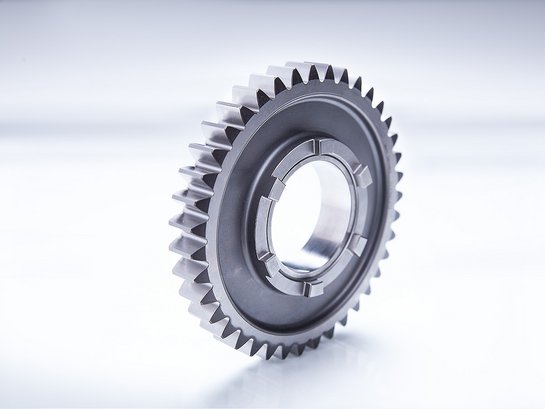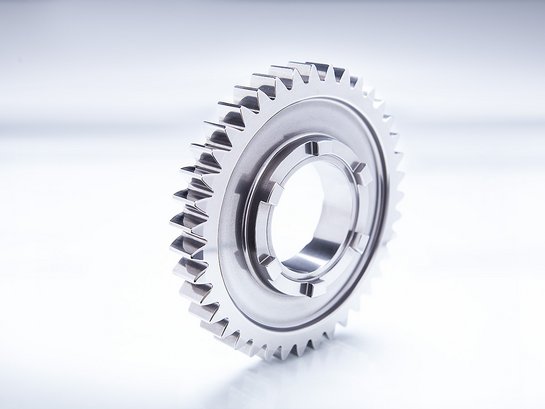Shot peening, also known as shot blasting for surface strengthening, enhances the durability and strength of metallic components.


This shot peening process offers many advantages: it increases the fatigue life of a component, improves load capacity while reducing overall weight, closes microcracks, reduces the tendency to stress corrosion cracking and corrosion fatigue, and enhances both reliability and fatigue resistance (for example in springs, connecting rods, and crankshafts).
This cold working process is suitable for any metal surface and is considered one of the most important surface treatments in the industry. Especially in sectors where maximum requirements for fatigue resistance and durability are demanded, and where components are constantly exposed to stress, the peening process has become indispensable.
Additionally, due to the continuous impact of the shot stream during shot blasting, components are also deburred, descaled, and derusted, achieving a comprehensive surface finishing.
Typical parts treated by shot peening include small mass parts such as gears, shafts, transmission components, springs, axles, valves, connecting rods, and crankshafts, but also suspension parts and large structural components.
What Makes Rösler’s Shot Peening Technology Special?
Rösler’s shot blasting and shot peening work stand out through intelligent process monitoring, innovative details, and durable components, including:
- Monitoring of the shot stream during air blast systems via magnetic measurement or Coriolis dosing systems – depending on whether metallic or non-metallic peening media are used.
- Use of the Rösler Power Line Valve for regulation in centrifugal blast wheel operations.
- Automatic acquisition, evaluation, and storage of process data through the HMI system “PC Supervisor” for maximum process safety in air blast systems.
- Efficient shot circulation using advanced classification systems, such as flow-optimized air separation, sieving for shot size classification, and media entrance location optimization.
- Workpiece transport monitoring for continuous reliability.
- High-performance RUTTEN Gamma turbines with reversible blades, delivering up to 16 times longer service life and ensuring a stable blast stream with minimal adjustment needs.
What You Should Know About Shot Peening
Frequently Asked Questions
Frequently Asked Questions
How Does Shot Peening Work? – Residual stress creates increased part strength
Strength is forged under pressure: In the shot peening process, carefully selected round metallic media are accelerated at high velocity and consistently directed onto the metal surface of gears, connecting rods, crankshafts, and similar parts.
Upon impact, they induce compressive residual stress in the surface layer and down to a maximum penetration depth. This effect significantly increases the fatigue resistance of highly stressed components such as gear teeth, turbine blades, and connecting rods.
The principle behind this cold working process is similar to forging metal – but instead of a hammer, the material is compacted by the high-energy shot flow. Each individual shot particle produces microscopic plastic deformation, and in total, these overlapping passes result in a continuous layer of beneficial compressive stresses.
What Are the Advantages of Shot Peening?
After shot peening, the metal surface is stronger, less prone to stress corrosion, and more resistant to corrosion fatigue. It shows improved mechanical properties, longer fatigue life, and increased fatigue resistance (e.g., in springs, crankshafts, and connecting rods). Particularly in aerospace, the process development of shot peening since the 1950s has been advanced rapidly. Today, the advantages of shot peening are indispensable in numerous industries.
Whether used for turbine blades, engine blocks, suspension parts, or structural components – shot peening protects against fatigue cracks, optimizes weight, and increases durability under continuous stress.
In aerospace, where all parts are exposed to extreme tensile stresses and operating loads, shot peening has become a standard method to introduce compression stresses into the surface. It is now used
Which Peening Media Are Used in the Shot Peening Process?

As the German term “Kugelstrahlen” suggests, cut wire shot or cast shot in a round metallic shape is typically used. The objective is to transfer impulse energy and induce residual compressive stress in the surface zone of the workpiece.
The size of the peening media plays a critical role: larger media can penetrate deeper and introduce compressive stresses at greater depth, but may also cause excessive cold working and unwanted plastic deformation on the metal surface, reducing the beneficial effect.
Another critical factor is shot quality. Shot breakage can generate sharp-edged shot fragments that roughen or damage the surface, causing local weakening. To avoid this, high-quality peening media with narrow size distribution, high hardness, and low fracture tendency must be used.
Cut wire shot, produced from rounded wire sections, is particularly effective, as it ensures a consistent and stable desired surface effect during shot blasting.
For Which Industries Is Shot Peening Essential?
In aerospace, shot peening is used to strengthen turbine blades, structural components, stringers, fan blades, and even complete aircraft cabins. It prevents stress corrosion cracking, delays fatigue cracks, and helps components withstand extreme operating conditions.
In e-mobility, where lower component weight means higher performance, reduced resource use, and longer range, shot peening enables the production of form-optimized, lightweight parts that are stronger and more durable.
Use the Solution Finder to find the right system for your processing method.
